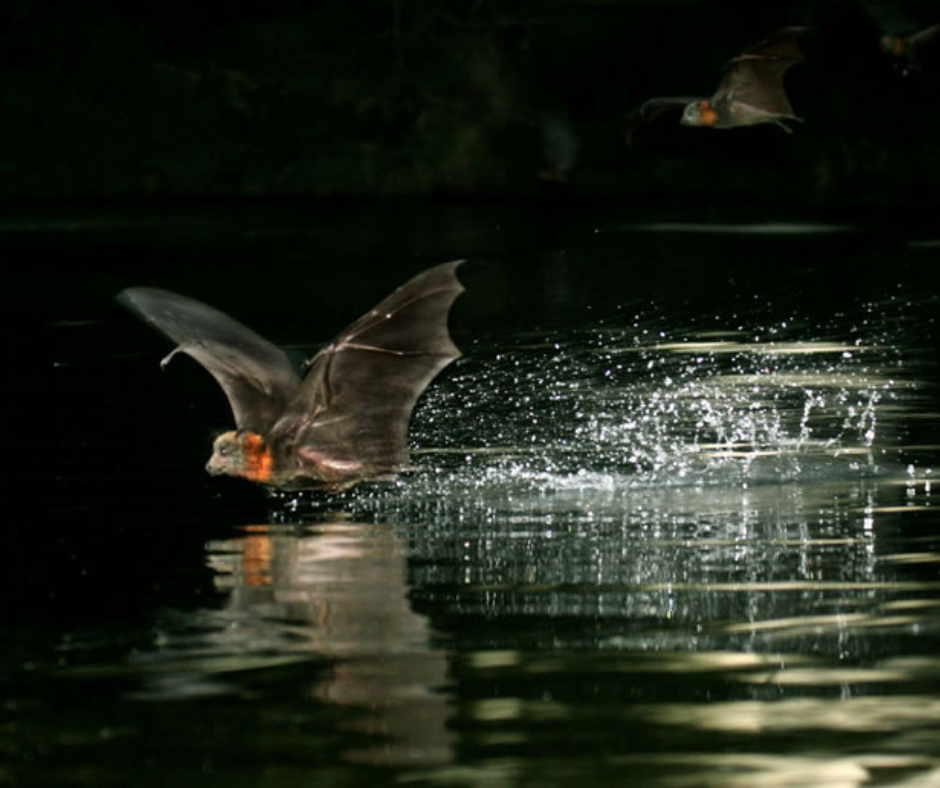Why do we love bats? Read more below to find out just how amazing bats are!

Photo credits: Fly By Night Bat Clinic – Bat Rescue Victoria
Our bats in Australia
Australia has about 80 species of bats, including microbats and megabats. Microbat species weigh between 3g-150g, with their wingspan reaching 25cm. Most microbats are insectivores, meaning they eat insects. Megabats include Tube-nosed Fruit Bats, Blossom Bats, and Flying-foxes. Flying-Foxes like our Grey-headed flying-fox are larger at weights of up to 1kg and with their wingspan reaching 1m. Most megabats are Frugivores (consumes fruit), and/or Palynivores (consumes nectar).
Don’t all bats echolocate?
Echolocation is when bats produce a sound out of the nose or mouth that is so high in frequency that we cannot hear, and this sound echoes back to the bat. This echo tells the bat about the texture, shape and size of things in its surroundings, which includes its food.
A megabats eyesight and sense of smell are so good that they are able to locate their food like Eucalyptus blossom at nighttime. The blossom’s light colour and strong fragrance make it much easier to find their food. Unlike other bats such as microbats, megabats do not use echolocation.

Photo credits: @famousflyingfoxes on Instagram
Bats help to create forests!
Bats are important for healthy ecosystems. These small mammals help to pollinate flowers to create fruits, disperse seeds throughout habitats, and eat insects which helps to protect crops. Bat poo is a great fertiliser and bats also eat mosquitoes, reducing the rate of disease transmission.The Grey-headed flying-foxes in Sydney in areas such as Gordon and Oatley eat nectar from eucalypts, turpentine, paperbark, and fruit like figs and lilly pillies to name a few. They have been known to visit over 100 native species!
The Grey-Headed Flying-Fox Quick Info Guide:
(Present in the Kur-ring-gai Flying Fox Reserve, Gordon NSW)
Scientific Name: Pteropus poliocephalus
Conservation Status: Vulnerable
Approximate Population Size: 467,000 and declining
Threats: removal of habitat, climate change, human conflict, competition for resources with other bats.

Photo credits: Vivien Jones
Your hand vs a bat wing?
Did you know that your hand and arm has the same bones in it as a bats wing? We are more alike than from first glance, known as homologous (same) structures! This is because humans, along with bats, birds and other mammals, once shared a distant common ancestor. Over evolutionary history, the changes you see in the picture below have occurred, so the bones now have a different purpose. Amazing right!?

Image credits: Arizona State University – Ask a Biologist.
Beating the heat in summer
Bats don’t sweat like humans do!
One of the ways bats are able to cool off during the hot summer months is to beat their wings! This movement makes the blood move to the part of the wings called the patagium, which reduces the temperature in the body.
Bats are also able to pant and lick their forearms, when the saliva evaporates it provides a cooling sensation. When bats really need a drink on a hot day or when there has been little to no rain, they can fly right close to a river and skim the water. A bat will then lick the water off its fur to drink. Another way flying foxes can quench their thirst is to drink dew off of leaves in its habitat.

Photo credits: Vivien Jones
Bats are awesome, but what can we do to help?
Other things you can do to help bats can include:
- Turning outdoor lights off at night
- Reduce tree removal
- Do not touch bats, even if they’re hurt; it’s best to call your local wildlife rescue group, such as WIRES
- Plant native flora that bats like to visit
- Support your local bat conservation organisations (like Sydney Bats!) through learning more about bats, donating, and going to events
- If you want to protect your plants from bats feeding, consider covering fruit trees with bird or bat safe netting
- If you see a bat acting unusually call your local wildlife rescue group like WIRES

Photo credits: Joel Sartore for National Geographic Aus
So next time you see bats flying around at nighttime, know that while you rest, flying foxes like the Grey-headed flying-fox are helping to create forests and keep our wonderful planet healthy for everyone!
Author: Rosie Dowsett